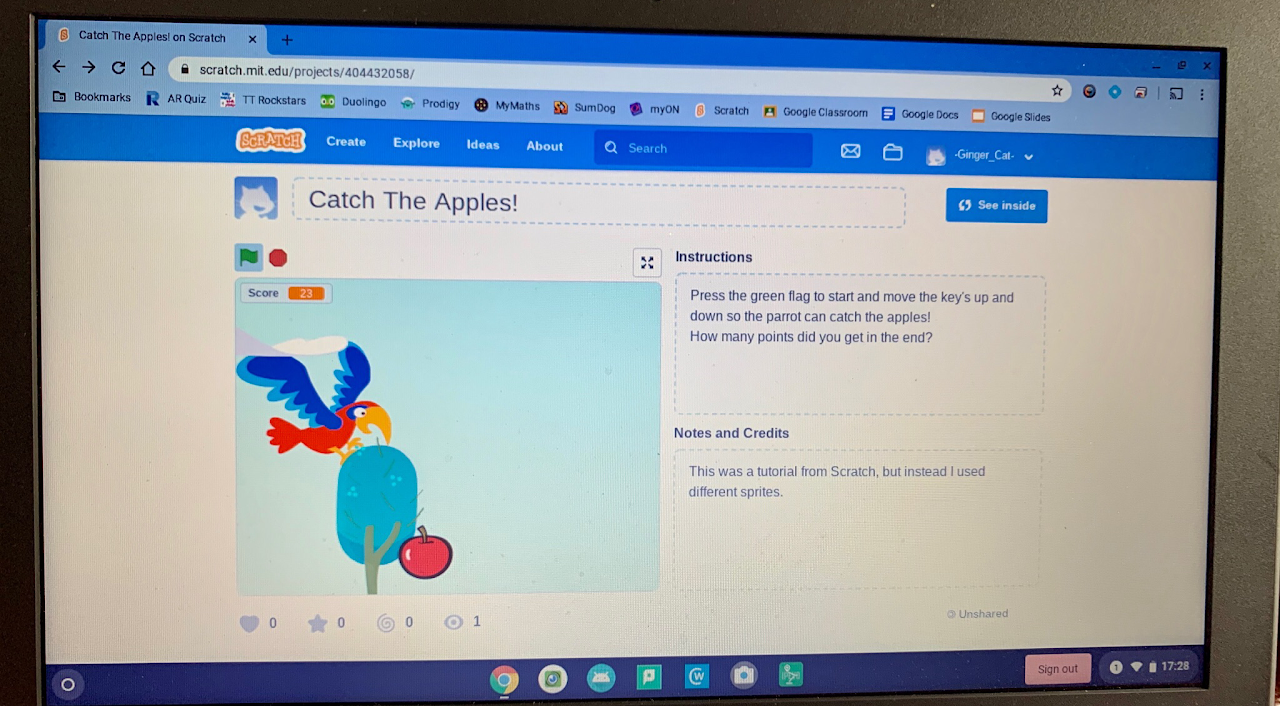Computer Science
Please click HERE to see an overview of what computing is taught in each of the year groups.
Subject Intent
A high-quality computing education equips pupils to use computational thinking and creativity to understand and change the world. Computing has deep links with mathematics, science and design and technology, and provides insights into both natural and artificial systems. The core of computing is computer science, in which pupils are taught the principles of information and computation, how digital systems work and how to put this knowledge to use through programming. Building on this knowledge and understanding, pupils are equipped to use information technology to create programs, systems and a range of content. Computing also ensures that pupils become digitally literate – are able to use, and express themselves and develop their ideas through information and communication technology – at a level suitable to prepare them for the future workplace and as active participants in a digital world. We want all children to become practical problem solvers who apply invention and resourcefulness to real-world systems and ideas. This combination of principles, practice and invention makes computing an extraordinarily useful and intensely creative subject, suffused with excitement.
systems. The core of computing is computer science, in which pupils are taught the principles of information and computation, how digital systems work and how to put this knowledge to use through programming. Building on this knowledge and understanding, pupils are equipped to use information technology to create programs, systems and a range of content. Computing also ensures that pupils become digitally literate – are able to use, and express themselves and develop their ideas through information and communication technology – at a level suitable to prepare them for the future workplace and as active participants in a digital world. We want all children to become practical problem solvers who apply invention and resourcefulness to real-world systems and ideas. This combination of principles, practice and invention makes computing an extraordinarily useful and intensely creative subject, suffused with excitement.
At Whitehill, we u se the ‘Teach Computing’ programme to structure our computing curriculum. It is an immersive and inspiring way to educate pupils in the current technological world, providing them with the greatest opportunities to understand the ‘hows and whys’ of the technology that surrounds them in their daily lives. This curriculum develops transferable skills for pupils and fosters the independence needed to directly apply their learning at home and in the wider world, giving them skills to enable them to access and then master the technology of the future. Through a progressive and challenging learning journey, it outlines and maps the resources and steps needed for pupils to achieve the expectations of the National Curriculum Programme of Study, whilst also offering opportunities to extend learning both at school and at home through levels of appropriate challenge. It provides thorough and progressive learning opportunities, building upon skills learned year-to-year, presented as fun and challenging projects directly linked to real-life and the real world.
se the ‘Teach Computing’ programme to structure our computing curriculum. It is an immersive and inspiring way to educate pupils in the current technological world, providing them with the greatest opportunities to understand the ‘hows and whys’ of the technology that surrounds them in their daily lives. This curriculum develops transferable skills for pupils and fosters the independence needed to directly apply their learning at home and in the wider world, giving them skills to enable them to access and then master the technology of the future. Through a progressive and challenging learning journey, it outlines and maps the resources and steps needed for pupils to achieve the expectations of the National Curriculum Programme of Study, whilst also offering opportunities to extend learning both at school and at home through levels of appropriate challenge. It provides thorough and progressive learning opportunities, building upon skills learned year-to-year, presented as fun and challenging projects directly linked to real-life and the real world.
Aims & Expectations
The school’s aims are to:
- Meet the requirements of the National Curriculum Programmes of Study for computing.
- Provide a relevant, challenging and enjoyable curriculum for computing for all pupils.
- Use ICT and computing as a tool to enhance learning throughout the curriculum.
- To respond to new developments in technology.
- To equip pupils with the confidence and capability to use ICT and computing throughout their later life.
- To develop the understanding of how to use ICT and computing safely and responsibly.
The National Curriculum for computing aims to ensure that all pupils:
- Can understand and apply the fundamental principles of computer science, including logic, algorithms, data representation, and communication.
- Can analyse problems in computational terms, and have repeated practical experience of writing computer programs in order to solve such problems.
- Can evaluate and apply information technology, including new or unfamiliar technologies, analytically to solve problems.
- Are responsible, competent, confident and creative users of information and communication technology.
Links to Other Policies
This policy links with several other policies, practices and action plans, including but not limited to:
- Positive Behaviour Policy
- Child Protection Policy
- Combined PSHE & RSHE Policy
Online Safety
In line with the updated guidance in Keeping Children Safe in Education (KCSE 2023), it is essential that children are safeguarded from potentially harmful and inappropriate online material. Our school has a whole school approach to online safety which protects and educates pupils, students, and staff in their use of technology.
The 4 Cs of online safety:
Content: being exposed to illegal, inappropriate, or harmful content, for example: pornography, fake news, racism, misogyny, self-harm, suicide, anti-Semitism, radicalisation, and extremism.
Contact: being subjected to harmful online interaction with other users; for example: peer to peer pressure, commercial advertising and adults posing as children or young adults with the intention to groom or exploit them for sexual, criminal, financial or other purposes.
Conduct: online behaviour that increases the likelihood of, or causes, harm; for example, making, sending and receiving explicit images (e.g. consensual and non-consensual sharing of nudes and semi-nudes and/or pornography, sharing other explicit images and online bullying; and
Commerce: risks such as online gambling, inappropriate advertising, phishing and or financial scams.
Online safety is taught to the children through PSHE lessons, computing lessons and assemblies.
Inclusion & Equal Opportunities
At Whitehill Primary School, we teach computing to all children, whatever their ability, age, gender or race. Computing forms part of our school curriculum policy to provide a broad and balanced education for all children. We provide learning opportunities that are matched to the specific needs of children with learning difficulties. In some instances the use of ICT has a considerable impact on the quality of work that children produce; it increases their confidence and motivation and allows access to parts of the curriculum to which the children would otherwise not have had. When planning work in computing, we take into account any targets which are evident on a class’ provision map. Teachers identify children who are working at a greater depth level in the area of computing. It is the teacher’s responsibility to ensure that these children are suitably challenged in their use of ICT and computing both in specific computing lessons and in using ICT in other curriculum areas. Opportunities are identified for these children to actively participate in more challenging aspects of computing.
Parental Involvement & Wider Community Links
As a school we encourage the support and implementation of computing where possible by the use of computing skills at home during home-learning tasks and through the school website. They will be made aware of e-safety and encouraged to promote this at home.
Resourcing, Health & Safety Considerations
The school is aware of the health and safety issues involved in children’s use of ICT and computing. All staff should visually check electrical equipment before they use it and take any damaged equipment out of use. Damaged equipment should then be reported to the computing technicians. Children should not put plugs into sockets or switch the sockets on. Trailing leads should be made safe behind the equipment and liquids must not be taken near the computers.
Monitoring
Each ‘Teach Computing’ module has the designated curriculum expectations highlighted on the progression document, as well as lesson plans that the children will look to cover during that module. At the end of each module, which will be six times per year, the teacher will make a judgement as to whether the children have made the expected attainment or surpassed. This should be recorded for teacher’s reference. At the end of terms 1, 3 and 5, this data will be transferred onto Target Tracker.


